|
|
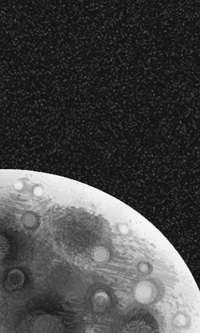
|
| ~2000: |
First man lands on the Moon. Itís potential compared to the cost of transportation ensures that any development of
the Moon is pointless. Mankind limits itself to near-Earth orbiting experimental stations and unmanned probes into deeper
space. The first computers are built, and computer technology quickly advances beyond space-flight technology. The study
of genetics also begins in earnest.
|
| |
~2100: |
Overpopulation becomes a serious problem on Earth. Control of childbirth becomes necessary, and is something that
humankind will utilize from this point on. Genetic research is used on animals and plants to increase food production. There
are still heavy taboos against usage of genetic engineering on humans. Population begins to balance out at about 12 billion.
|
| |
~2400: |
Mankind begins to make strides in space-flight technology. Orbital stations are made in near Earth orbit and the
Lagrange points. Civilians are allowed and able to go to most of these. First manned exploration to Mars sent.
|
| |
|
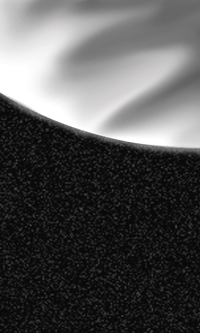
|
| ~2500: |
Outposts are created on Mars, mostly underground and heavily shielded against radiation. Manned ships sent as the
orbits of Earth and Mars bring the planets nearer to each other, every couple of years. An accident aboard one ship due to
solar flares kills one of the crews. Eventually the outpost is abandoned.
Mankind begins to experiment in genetically engineering plants and animals from scratch. At first this is to increase food
yield, but eventually it is explored for reasons of pure science.
Advances in Artificial Intelligence have allowed for sentient computers. Man is very careful to not give them weapons.
|
| |
| ~2700: |
Mankind begins to feel some population pressures again. Settlements are created on Antarctica, heated and powered
mainly by fusion generators, which have become the main source of power for humanity. The decision was made to try to
continue the exploration of Mars, with the focus being terraformation. Minimal genetic engineering was done on the
explorers voluntarily to make them more resilient to radiation. Experimentation done to thicken Marsí atmosphere show
positive results and are continued.
Mining of the asteroid belt begins. The smaller asteroids are moved into Earth orbit to be processed. Larger ones such
as Ceres, Vesta, and Pallas are used as supply and fuel dumps. No permanent habitats are established there.
|
| |
|
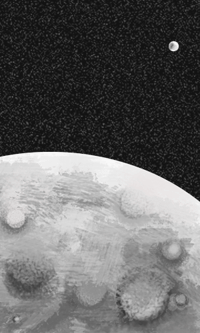
|
| ~3000: |
~3000: Colonization and terraformation of Mars begins in earnest. Colonists are sent in the tens of thousands. Genetic
alterations against radiation are still necessary, but studies have showed that it was safe to breed with the alterations.
Laws are made to keep taboos on most other kind of human genetic experimentation. Space ports are made on both Phobos and
Deimos. Phobos is used mostly as a way point for materials to and from other points in the solar system, and Deimos is used
mostly for commercial and private travel. Mankind begins to send small manned exploration ships to the gas giants, most
notably Jupiter and itís moon system.
Genetic engineering and manipulation begin to come into itís own at this point, mostly due to the need for flora and
fauna able to live in the drastically different environment that Mars is.
AI is still subservient to Man and it is only allowed certain functions. Most people are nice to their House AI,
though, and trust them completely. AI is not given the ability to reproduce itself at this time, however.
|
| |
| 3298: |
Cataclysm strikes Earth.
The details are never known, other than the fact that an experiment into geothermal energy went drastically wrong. Vast
amounts of geothermal energy was released onto the crust of the planet from the core, along with toxic gasses. Most of the
damage occurs near the experiment site in Northern Africa, but earthquakes and volcanoes were stimulated by this event and
many erupted at once.
Population on Earth was decimated. Barely 10% of the population survives, and the world starts to settle into chaos.
In the midst of this, the space station-cities in the Moonís L4 and L5 points declare themselves to be independent nations.
Mars becomes the main planet for humanity by default, and declares its independence from Earth. It's population reaches
1 billion people due mostly to heavy colonization.
|
| |
|
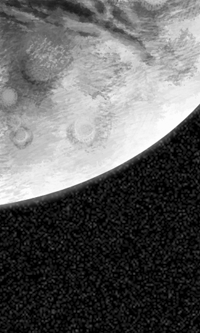
|
| ~3500: |
Colonization of Europa begins from Mars. A large, almost planet-wide ocean is discovered under the ice there, with
an oceanic biosphere. Outposts are created first, hanging to the underside of the ice crust to gain maximum protection from
Jupiterís radiation, and free protection from the hard vacuum of space. Usually, only the spaceport had access to the
surface. Also, genetic altering is needed to help resist the massive magnetic fields of Jupiter. The taboos against this
have mostly vanished anyway. Quickly, however, Europa becomes a popular tourist location for Martians. Ganymede is also
explored. Marsí population reaches 2 billion.
Earthís population grows very slowly as those who can afford to emigrate to Mars have been doing so. Earthís population
has become mostly agrarian and subsistence due to the surface still being unlivable in many areas.
Some differences in the normal body-form of humans begin to show in Martians around this time. Most notably these are
increased height and thinness of limbs, ascribed to the lesser gravity of Mars. Further genetic alterations are made to
bolster bone strength and resiliency. Also, there is an increased resiliency to cold and a lower air pressure, as Mars
still has not developed a fully Earth-like atmosphere. It can support the forms of life engineered for it. These are
expanded on widely.
People begin to live on Ceres, Vesta, and Pallas in the belt, but not many. Asteroids are no longer moved from their
orbits to be processed for the most part due to Mars being nearer and the costs of transporting refined materials dropping.
More plants and animals are created by Mankind to live on the other worlds being colonized, such as Europa and
Ganymede. AI is given more and more autonomy, and even the beginnings of civil rights under the law. AI now drive,
pilot planes and starcraft, and manufacture other machines.
|
| |
| ~3800: |
Colonization and terraformation begins on Ganymede. Due to itís similarity to Europa it is done the same way, with
cities between ice and ocean. Callisto has much less in terms of oceans, so itís first cities start as domed scientific
outposts. People begin to flock to the Jovian system from Mars. More genetic alteration is needed to again bolster
radiation resistance.
The small habitats in the asteroid belt begin to grow, becoming way points between the Inner and
Outer Solar System. People start making small communities in the asteroids, called Homestead Asteroids. Typically they
are no more then a couple of kilometers across. Homesteaders become the main source of materials from these asteroids, and
the population there grows fast. However, the mined resources are exported just as fast. The larger asteroids are used
mostly as way points between the two worlds. The Asteroid Belt Confederation is established to protect the rights of the
people living there, and is supported by Mars. Mining also begins in Jupiterís Trojan points and smaller moons, with the
materials headed mostly for Europa, as it is closer then the asteroid belt.
|
| |
|
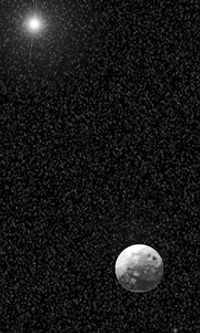
|
| ~4000: |
Mars is starting to feel crowded as the population reaches 3 billion. It is almost completely terraformed by this time
as well, with the population living mostly in the open.
Genetic Engineering has made a breakthrough by creating a plant that can be lived in. It is only partially organic and
has all the amenities as a normal domicile would. It is self-sufficient for the most part, providing itís own electricity
through photosynthesis and is able to collect water from the environment. The House AI is a separate entity from the home
at this point, but efforts are being made to incorporate it. Other advances allow for animals to be made that are useful
but not self-aware, such as the Farmer Drone, an animal bred to raise and tend crops with instruction from the farmer.
Europa reaches nearly 1 billion, but will probably not grow more due to the constraints of living under massive ice
sheets. Waste heat begins to affect the Europan ocean, ice sheet, and biosphere. Large radiating fins are built on the
surface to try to alleviate this. Ganymede follows suit. Callistoís population is also rising slowly.
Mankind now also has a foothold in Jupiterís smaller moons and into the Trojan points, but no large colonies are
established. These small societies form and resemble the Homesteaders of the Belt in the way they set themselves up.
Homesteading in the asteroids drops off as the more desirable asteroids have all been taken.
Earth is also beginning to recover much faster now, and its population has again reached 1 billion. Manned exploration
of Saturn also begins around this time, but is considered almost too far away. The Outer System is seen as mostly useless
to humanity. It is too far and too cold.
|
| |
|
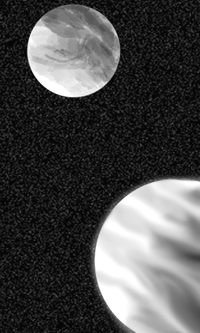
|
| ~4500: |
Titan is turned into a combination of scientific outpost and prison colony due to itís distance, cold, and harsh
environment. Domes are not needed to maintain air pressure, but simply a livable atmosphere.
Marsí population nears 4 billion, and is becoming earnestly crowded.
Stricter population controls are implemented. Earthís population grows faster now and nears 2 billion. Breeding controls
are looser there. Earth begins to become a power in the Solar System again, since it has mostly recovered from the
Cataclysm. Most of Africa and Europe remains uninhabitable and will stay that way for a long, long time.
The Jovian moons do very well in this time frame, with Europa being the forerunner, population-wise. The population on
Callisto grows slowest, but it does grow.
Further diversity in humankind can be noticed, as the people in the Jovian System grow even taller and more waif-like
then Martians do. Circadian rhythms change due to the odd rotations of the Jovian moons around their primary, and the
tidal lock.
The House Plant on Mars is now sentient and widely successful. A version is tried on Earth and is also successful.
Genetic Engineering has made another great stride. Living Spacecraft are made and sent out into the System.
Living cars, boats, and all manner of being have also been produced. All vehicles are made sentient, collectively called
the ďCraftĒ, but most of the other new ďanimalsĒ are not, and are only given enough intelligence. The sentient ones are
given full rights as living beings.
Another milestone for humanity comes at this point: an extra chromosome, and a completely artificial one at that.
This was done to standardize all the genetic manipulation done to the human genome in the past to allow for space travel
and colonization. It took two generations of innoculations to completely incorporate the chromosome into Mankind.
Something else was added to the chromosome. Due to the increasing complexity of mankindís technology, an ability to
instinctively understand nearly all technology and biology was encoded. Laying dormant in most of society, these instances of savantism only manifested in about 2% of the population. Another reason for this was to give the machine-beings a dependance on humans, since they were nearly completely independent by this time. Once the ability manifested, only a minimal amount of training was needed for a Savant to understand any specific piece of technology. Most Savants specialized in specific areas, determined by their ability and past.
|
| |
|
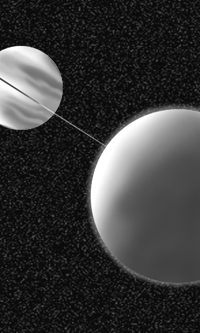
|
| ~5000: |
Europa, Ganymede, and Callisto declare themselves independent of Mars. A cold war begins between them and Mars cuts
off its support. The situation never develops into a full-scale war, as the cost of such a war between worlds would be
astronomical and pointless.
Titan, its numbers growing, is no longer considered a prison planet, and hasnít been in a couple of centuries. Still a
small colony due to the problems of domed cities, Titan is not a part of the interplanetary cold war. Technically it is
still a principality of Mars, but the long travel time between the two worlds means that it is effectively cut off from
the rest of the solar system. Titaners begin to mine Saturnís outer, more nebulous rings in order to obtain supplies.
At around this time, the asteroid belt is finally depleted. It becomes a backwater for the most part, and the larger
rocks become agrarian in nature. Many clans and cults exist here.
Spacecraft begin to use up all available comets for fuel, and slowly move further and further out into the Solar System
looking for volatiles. Bases begin to be built on the smaller of Saturnís moons as they tend to have the materials needed.
Genetic Engineering makes another breakthrough. A fungus is made that can grow in an inhabited asteroid, replacing the
current mechanical infrastructure, such as pipes, electrical lines, and air transfer devices. It also replaces the current
hodgepodge of computer systems and is completely sentient. As a result, rocks like Phobos, Deimos, and the smaller ones in
the Belt become self-aware. Places as large as Ceres or Vesta have multiple colonies of fungus on it, usually one per city.
Another strain is made to inhabit the already existing structures in places like Europa and Ganymede.
|
| |
| ~5100: |
The cold war between Mars and the Jovian System ends. The Jovian moons keep their independence and start trade with
Mars again. The Jovian System also starts to trade with Titan again.
|
| |
| ~5200: |
Titan creates a small colony on Rhea, similar in style to Callisto due to the large amount of ice in Rheaís makeup.
Until this point, it was simply the largest of the fuel dumps for Craft. Laws are set up to protect the inner, more
distinct and visible rings of Saturn from mining due to heavy insistence from the rest of the Solar System. The Craft
protested, but conceded to this. In the negotiations for this, all other planetary rings were given to the Craft to do
with as they wished.
|
| |
| ~5300: |
The Craft have completely used up Jupiterís planetary ring.
|
| |
|
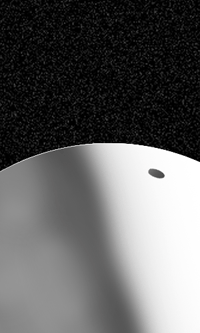
|
| ~5500: |
Marsí population balances out at 5 billion. The Jovian system reaches nearly 4 billion, with 1 billion on Europa, 2
billion on Ganymede, and the rest on Callisto. Titan nears 1 billion. Rhea, still a new colony, only reaches around a
hundred million. Earth is now a full-fledged part of the Solar community. Its population reaches 5 billion, equaling
Mars. Intricate and complex treaties are made between Earth and Mars to insure that there isnít any conflict of
interest between the two worlds. Representatives from both the Jovian and Saturnian Systems are present and sign as
witnesses.
Craft and humans begin to move further out into the Outer System, and start exploring Uranus and Neptune. Other than
being abundant in fuel, there is not much there.
|
| |
| ~5600: |
Humanity finally becomes interested in the Moon, although only slightly. Two cities are created on the Moon to help
facilitate inter-system trade. Although quite large, these cities are rarely full, and only have a minimal indigenous
population. These cities were made to allow visitors from other worlds some comfort, as all of which have a gravity
nearer to the Moonís.
|
| |
|
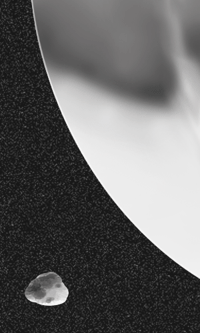
|
| ~6000: |
The peoples of the specific worlds have begun to consider themselves fundamentally different from each other. There is
talk of divergance of the species Homo Sapien, but no hard proof, as the new chromosome would not allow it. The physical
differences, such as height or strength, are from acclimitation to the various planets. However, due to this relations
between the major worlds have become a little estranged and stilted.
There is still commerce between the worlds, but the occasional sign of racism and species-ism crop up from time to time.
This is especially apparent in the attitudes Terrans (people from Earth) towards the rest of the Solar System, but can also
be seen in Martian sentiment towards Terrans, who most people consider slightly backwards. The relations between Mars and
the Outer System worlds tend to be less strained as they are more closely related.
|
| |
6291- 6425: |
A series of wars breaks out in the asteroids belts among the Homesteaders. Mostly due to ideological differences in the
major clans, several dozen Homestead Asteroids are completely destroyed, with a huge amount of casualties on every side.
The legal systems of the Belt Confederation are mostly unable to prevent the fighting as they are mainly meant for a mining
society and are very outdated.
For the most part, the major worlds are not willing to step in as they see the belt as a backwater and a depleted source
of resources. Some companies even go so far to secretly back some of the clans to increase the export of supplies in the
form of recovered and recycled resources from the once occupied asteroids.
The Belt Wars, as they become known, officially end in 6525 with the adoption of the Second Asteroid Belt Confederation
Laws, a stricter set of laws designed to prevent this kind of warfare again. However, various clans keep the hostilities
alive in one form or another for the next few hundred years.
|
| |
|
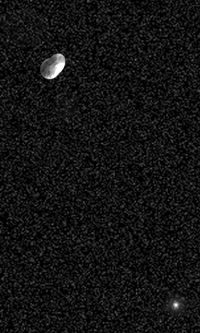
|
| ~6500: |
As mineral resources from elsewhere in the Solar System has mostly become depleted, interest in Mercury rises. A new
method of mining is developed, called Longitudinal Strip Mining. It is a process of strip mining where the mine stretches
in one strip that eventually encircles the planet. This allows the miners and their equipment to move along in the dark,
cooler side of Mercury as they gather resources. Also, a large variety of resources can be gathered due to the vast
distances the mines cross.
There is much political wrangling over the mining potential of Mercury. Eventually the planet is carved into horizontal
slices, where each planetary interest is given a share.
|
| |
| ~7000: |
The Solar System reaches itís current state.
|
| |
| 7330: |
Present day.
|
| |
|

